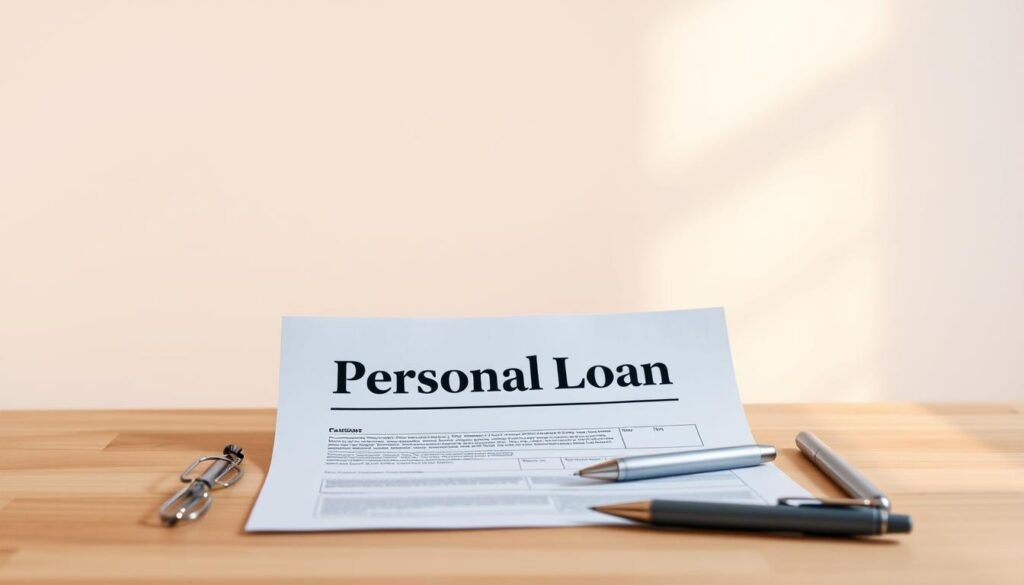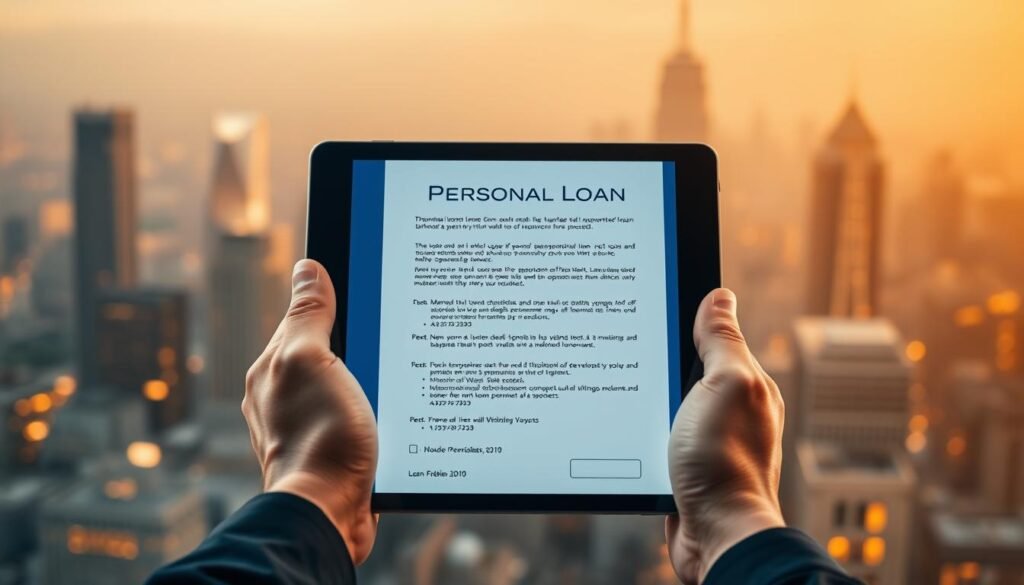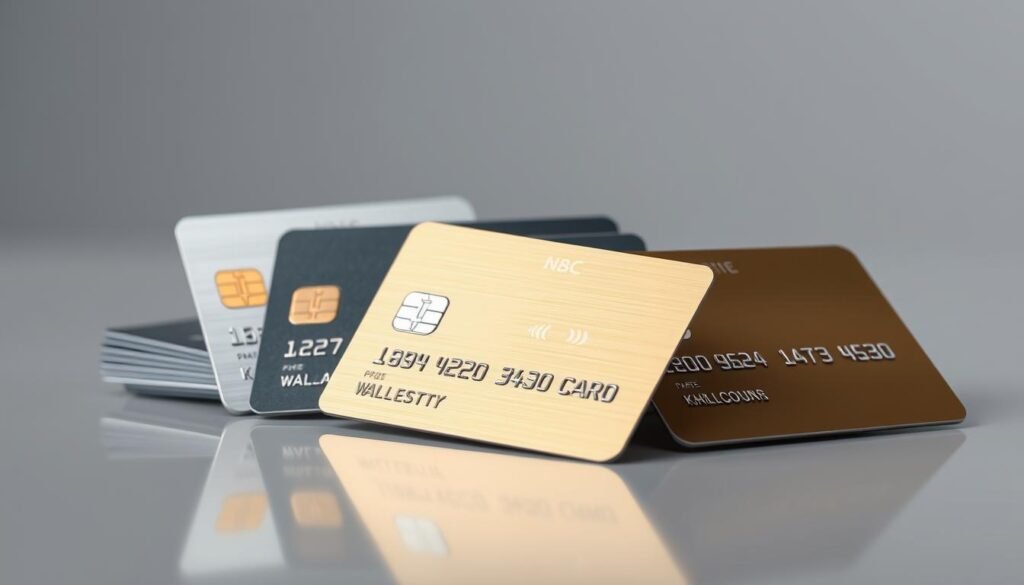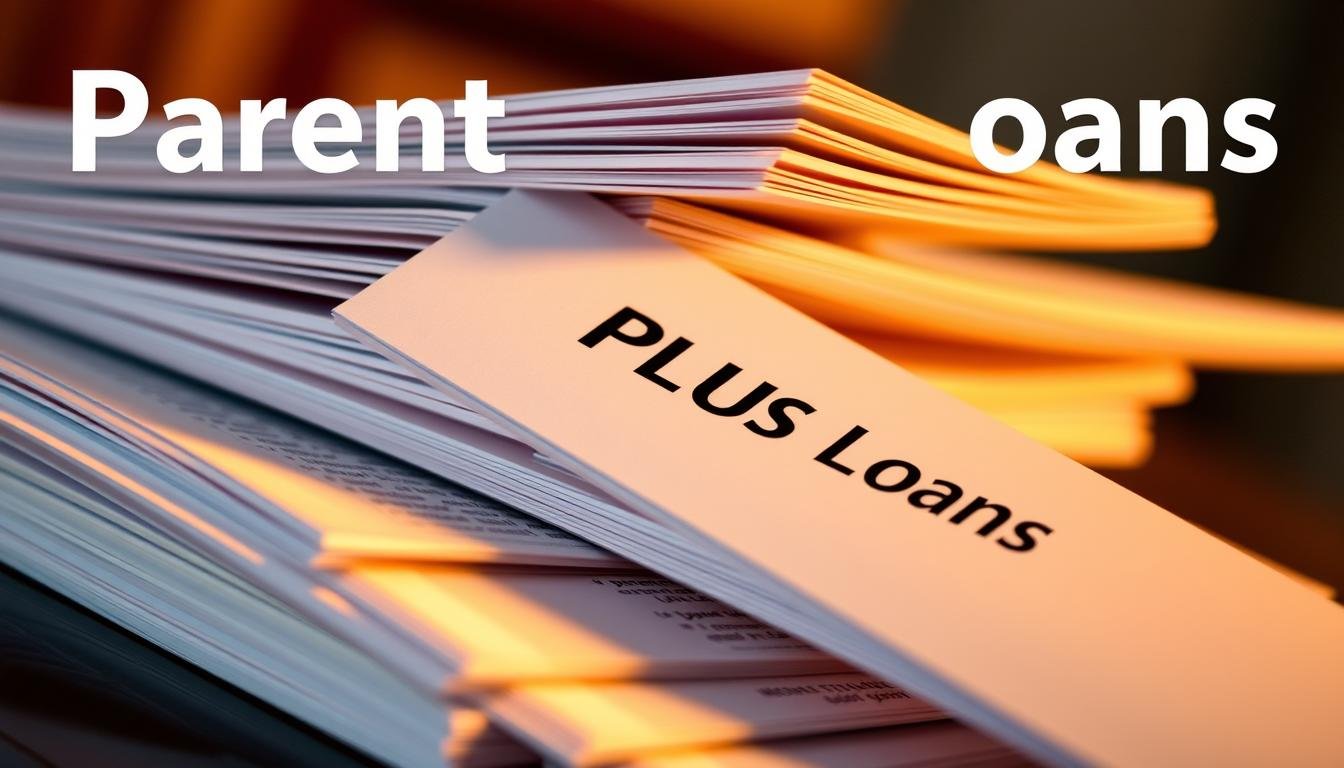This introduction explains clear paths for borrowers facing a thin or absent credit history. Many lenders rely on credit files from Experian, Equifax, and TransUnion to create scores. When reports are missing, scoring systems like FICO and VantageScore cannot produce a number, which changes underwriting and fees.
Personal loan options exist for people with limited files, though offers often carry higher rates or stricter terms. Some online lenders such as Upstart and Oportun review alternative information and may approve applicants who lack traditional scores.
Readers will find practical steps for choosing a small, needed amount, comparing offers, and applying with minimal time and expense. The guide also points to reliable tools like AnnualCreditReport.com and CreditWise for tracking reports and score trends.
Key Takeaways
- Missing credit files mean bureaus can’t generate a score; lenders use other data.
- Some lenders consider thin files but may charge higher fees and rates.
- Compare offers carefully and borrow only the amount needed.
- Use AnnualCreditReport.com and monitoring tools to track progress.
- Consider secured cards and credit-builder products as alternatives.
Understanding No Credit vs. Bad Credit in the U.S. Today
Credit invisibility happens when the major reporting systems lack enough data to produce a usable score.
What “no credit” means under major bureaus
The credit bureaus need recent tradelines and reported activity for models like FICO or VantageScore to work. When accounts are too new, closed, thin, or stale, the bureaus cannot create full reports.
How this differs from low or bad credit
Bad credit means a credit score exists but is low due to missed payments or high balances. By contrast, no score exists for the unscorable file, so the numeric measure is missing.
Why invisibility limits traditional loan options
Lenders rely on credit bureaus and reports to predict repayment. Without that information, fewer institutions will approve requests and many applicants face higher costs or fewer choices for loans.
- Start building history and verify that open accounts report to the bureaus.
- Understand that immigrants and young adults often need extra time for files to become scorable.
How Lenders Evaluate Applicants Without Credit History
When a numeric score is missing, underwriting shifts toward verified earnings and job tenure. Lenders look for clear evidence that an applicant can cover monthly payments.
What underwriters focus on
Income, employment, and education matter. Some firms, including Upstart, factor in education and work history when a credit file is thin.
Debt-to-income is key. Lower DTI improves chances. Savings, rent, and utility payment records can also help.
Secured versus unsecured choices
A secured personal loan backed by collateral such as a vehicle often yields lower interest and higher approval odds. Unsecured options depend more on cash flow and verified earnings.
- Lenders often offer a soft credit check for prequalification and use a hard credit check at application.
- Applicants should prepare pay stubs, bank statements, and proof of recurring income or expenses.
- Secured loans carry repossession risk if payments are missed; weigh that trade-off carefully.
| Factor | Secured | Unsecured | Common outcome |
|---|---|---|---|
| Primary evaluation | Collateral value | Verified income | Approval depends on evidence |
| Typical rates | Lower interest | Higher interest | Terms adjusted for risk |
| Risk to borrower | Repossession possible | No collateral loss | Choose based on priorities |
Understanding these factors helps applicants target appropriate options and submit stronger applications from the start.
How to Get a Loan with No Credit

Begin with a clear budget and the minimum funds needed so interest and fees stay manageable. Choose an amount that covers the expense and fits monthly household cash flow.
Prequalify without a hard credit check
Many lenders offer soft prequalification through an initial credit check. Platforms like Upstart, Avant, OneMain Financial, Universal Credit, and Oportun let applicants preview potential rates and fees without harming their score.
Compare offers: APR, fees, terms, and total repayment
Compare multiple personal loan offers side by side. Focus on APR, origination fees, monthly payment, total repayment, and whether the payoff timeline fits the budget.
Submit a complete application and verify identity and income
Gather a government ID, recent pay stubs, W-2s or tax returns, and bank statements before applying. Accurate documents speed underwriting and can lead to funding within one to two business days.
- Confirm disbursement timing and whether funds deposit same day or within 1–2 business days.
- Choose autopay if available; some lenders offer a rate discount.
- Keep copies of disclosures and repayment schedules for record-keeping.
Personal Loan Options When You Have No Credit

Applicants with limited files can often find practical routes through local and online institutions. Each path offers trade-offs in cost, speed, and reporting that affect future borrowing.
Credit unions and community lenders
Credit unions and community banks may weigh membership, steady income, and local ties when evaluating applicants. That flexibility can lower fees and produce friendlier terms than large banks.
Online lenders open to thin files
Some online lenders, including Upstart and Oportun, review education, employment, and verified income. These platforms can move quickly and offer clear prequalification paths.
Using collateral for secured options
Offering an asset as collateral, like a car with a clear title, often improves approval odds and may reduce APR. OneMain Financial lists secured and unsecured choices that vary by state and vehicle value.
- Confirm whether payments are reported. Reporting builds credit history and opens future options.
- Ask about smallest loan sizes, prepayment rules, and funding speed before applying.
| Provider type | Typical strength | Common trade-off |
|---|---|---|
| Credit unions | Lower fees, local service | May require membership |
| Online lenders | Fast decisions, thin-file acceptance | Higher APRs possible |
| Secured options | Better approval odds | Risk of repossession |
Lenders and Platforms Known to Consider No Credit

Certain providers accept thin or invisible files and use alternative data to assess repayment ability. Below are national options that often work with applicants who lack a traditional score.
Upstart
Upstart considers education, employment, and income, enabling approvals for a personal loan without a traditional file. Typical offers start at $1,000 and reach up to $50,000 or more. Upstart charges origination and late fees but generally has no prepayment penalty.
OneMain Financial
OneMain provides secured and unsecured choices with 24–60 month terms. Funds usually arrive by ACH within one to two business days, sometimes the same day. Secured loans may use a car as collateral; state origination fees vary and prepayment penalties are rare. For example, a $6,000 loan at 24.99% APR over 60 months has payments near $176.07.
Avant, Universal Credit (Upgrade), and Oportun
Avant offers $2,000–$35,000 with APRs roughly 9.95%–35.99% and fast funding, often next day. Administrative fees can reach about 9.99%.
Universal Credit (Upgrade) requires about a 560 minimum credit score, provides $1,000–$50,000, and charges origination fees of 5.25%–9.99%.
Oportun serves no-score and low-income applicants with small loans starting near $300 and possible same-day funds. Admin fees may be as high as 10%.
- Compare interest rates, origination fees, and repayment terms before applying.
- Confirm how quickly funds post to an account and whether payments are reported to bureaus.
- Choose lenders that report on-time payments to help build credit scores over time.
| Provider | Range | Key feature |
|---|---|---|
| Upstart | $1,000–$50k+ | Alternative data underwriting |
| OneMain | $1,500–$20k | Secured options, ACH funding 1–2 days |
| Oportun | $300–$10k | No-history applicants, possible same-day funds |
Alternatives If a Standard Personal Loan Isn’t Available

When standard personal financing is out of reach, several practical alternatives can provide funds and build a track record.
Secured credit cards and credit-builder products are low-risk starting points. A secured card requires a refundable deposit and reports on-time payments. Credit-builder loans hold funds while payments post; at term end, the borrower receives the cash and gains positive history.
Becoming an authorized user on a trusted person’s account can pass account age and payment history when the issuer reports authorized-user data. This can help a thin file become scorable faster.
Loans from friends or family may offer the lowest cost. Still, parties should sign clear written terms for amount, schedule, and consequences to protect relationships.
Collateral and workplace retirement options
Home equity loans and HELOCs use the home as collateral. They often need appraisals and can carry variable rates on HELOCs. Missed payments risk foreclosure.
A 401(k) loan can provide cash without a hard check, but typical rules allow borrowing up to 50% of vested balance or $50,000. Failure to repay within the required timeframe may trigger taxes and penalties.
- Confirm whether the product reports to bureaus; reporting matters for a rising credit score.
- Compare fees and interest across every option before deciding.
Costs to Watch: Interest Rates, Fees, and Terms

Small differences in pricing and rules can change total borrowing cost by hundreds or thousands. Borrowers should scan rate disclosures and fee lines before signing any agreement.
Fixed APR versus variable rates
Fixed APR personal loan products lock a steady monthly payment. That predictability helps with budgeting and planning.
Variable rates, common for HELOCs and some credit products, may fall or rise. Rising rates increase monthly payments and total interest paid.
Origination, administrative, and late fees
Lenders may charge origination fees that are flat or percentage-based. For example, OneMain lists $25–$500, or roughly 1%–10% depending on state.
Avant may add administrative fees up to 9.99%, and most lenders assess late fees for missed payments. Add these costs when comparing offers.
Example repayment timelines and total cost
Use concrete examples to compare impact. For instance, a $6,000 principal at 24.99% APR over 60 months yields about $176.07 per month.
That mid-20% APR over five years can add thousands in interest. Check whether the APR shown includes origination or other fees, since APR combines interest and many charges for apples-to-apples comparisons.
- Confirm prepayment terms and whether autopay discounts apply.
- Align term length with the expense’s useful life to avoid paying long after the benefit ends.
- Build a small payment buffer in the budget to protect on-time payments and preserve credit standing.
| Cost element | Typical effect | What to ask |
|---|---|---|
| Fixed APR | Predictable payments | Is APR locked for term? |
| Variable rate | Payments may change | How often can rate reset? |
| Origination & admin fees | Higher upfront cost | Are fees included in APR? |
Predatory Loans to Avoid or Approach With Caution
Certain short-term products offer fast access to cash but often impose burdensome costs and tight deadlines. Consumers should weigh risks before choosing these options and prefer safer small-dollar sources when possible.
Payday loans: triple-digit APRs and debt cycles
Payday loans usually carry triple-digit APRs and a due date tied to the next paycheck. That short schedule encourages rollovers, which stack fees and produce a costly debt cycle.
Auto title loans: repossession risk and very short terms
Title loans use a car title as collateral. Terms often last 15–30 days with APRs reported near 300% in some cases. Missing one payment can mean losing the car.
Pawn shop loans: low loan-to-value and high finance charges
Pawn shop lending typically offers 25%–60% of an item’s value. High finance charges apply, and failure to repay results in forfeiting the pledged item.
- These products target people with limited mainstream options and urgent cash needs.
- Even one rollover or missed payment can multiply cost and damage credit and mobility.
- Safer alternatives include credit union small-dollar loans, payment plans, or credit-builder products.
| Product | Typical APR | Term | Primary risk |
|---|---|---|---|
| Payday loans | 100%–400%+ | Due at next paycheck | Rollover fees, growing balance |
| Auto title loans | Up to ~300% | 15–30 days | Repossession of car |
| Pawn shop loans | High finance charges | Short to medium | Loss of pledged item |
Credit Monitoring and Building After You Borrow
After receiving funds, tracking changes in reports and scores helps borrowers measure progress and spot errors early. Regular checks show whether on-time activity and lower balances are being reported.
Pull free reports and track scores over time
Consumers can pull free reports at AnnualCreditReport.com. Doing this once every few months reveals reporting patterns and any mistakes that might harm a credit score.
Free monitoring tools such as CreditWise do not affect scores and offer simulators that estimate how actions — like taking out a loan — may change scores. Use those insights to plan the next steps.
On-time payments and keeping balances low
Payment history is the single most powerful driver of strong credit. Make every payment on time and, when possible, pay more than the minimum.
Keep balances low on revolving accounts relative to limits. Low utilization and preserving older accounts help a thin credit history age into better standing.
- Set up autopay and confirm the lender reports payments to bureaus.
- Avoid opening multiple new accounts in a short span; this preserves average account age.
- Dispute errors promptly so scores reflect correct information.
Application Checklist for No-Credit Applicants
An organized checklist shortens underwriting and speeds funding for applicants without an established score. Gather key documents and confirm details before clicking submit. Accurate information reduces follow-up requests from the lender and gets funds into an account sooner.
Identification and income verification matter most. Typical documents include a government-issued ID, recent pay stubs, W-2s or tax returns, and bank statements. Keep digital copies ready for upload or secure fax if requested.
Choose payment timing and protections. Ask whether the lender lets you pick a monthly due date and if autopay offers a rate reduction. Confirm prepayment policies; most reputable personal loan providers do not charge penalties for early payoff.
- Double-check the application for accuracy; small errors trigger delays.
- Verify contact details and income figures match your documents.
- If prequalifying, keep paperwork handy so verification completes quickly.
- Ask how funds will be disbursed—ACH, check, or direct-to-creditor—and expected timing.
- Keep signed disclosures and the repayment schedule for your records.
| Checklist item | Why it matters | What applicants should check |
|---|---|---|
| Government ID | Verifies identity | Match name exactly on forms |
| Income documents | Supports repayment ability | Provide latest pay stubs or tax returns |
| Bank statements | Shows cash flow and deposits | Upload 30–90 days of statements |
| Repayment settings | Helps avoid missed payments | Confirm due date, autopay, and fee policies |
Conclusion
Targeted borrowing and disciplined repayment create the foundation for better terms and broader options later.
It is possible to secure a personal loan by focusing on lenders that assess broader data. Names such as Upstart, OneMain Financial, Avant, Universal Credit, and Oportun appear in the marketplace, though offers may cost more. Compare APR, fees, and total repayment information before committing.
Consider alternatives like secured credit cards, credit-builder loans, or becoming an authorized user to build credit history. These options help establish records and improve future borrowing terms.
Track reports at AnnualCreditReport.com and use tools like CreditWise. Avoid payday, title, and pawn loans; their high fees and risks can harm money and credit progress.
With accurate applications, steady on-time payments, and periodic review, a thin starting point can evolve into a stronger profile and lower-cost opportunities over time.






